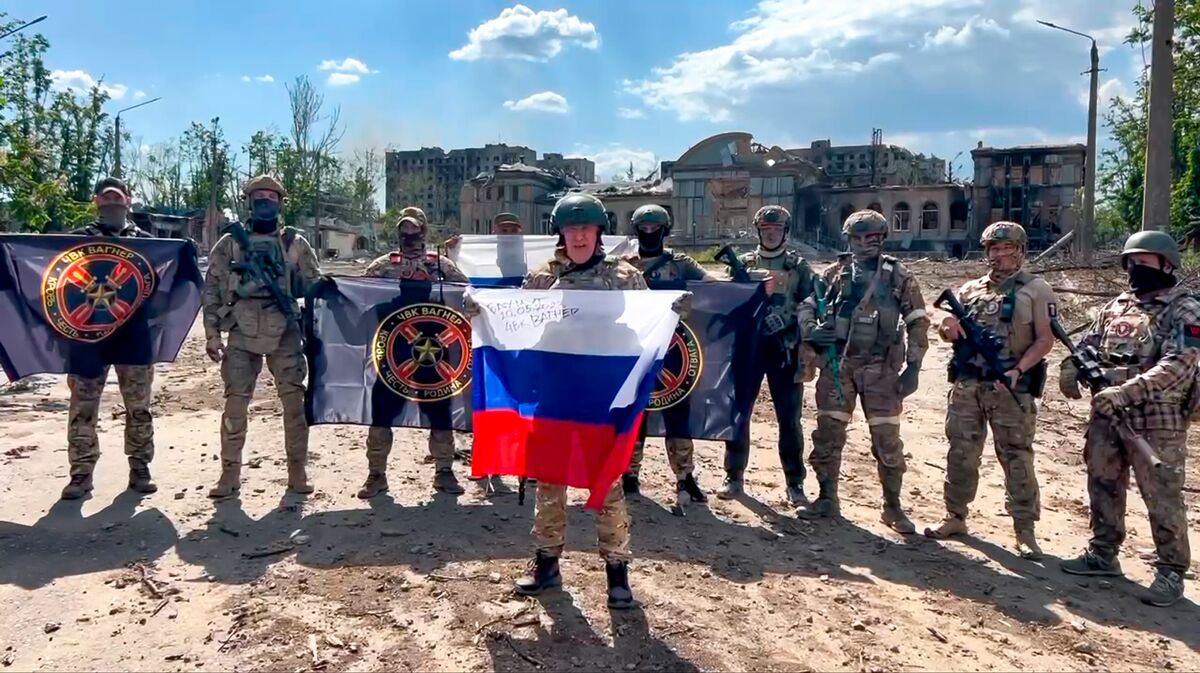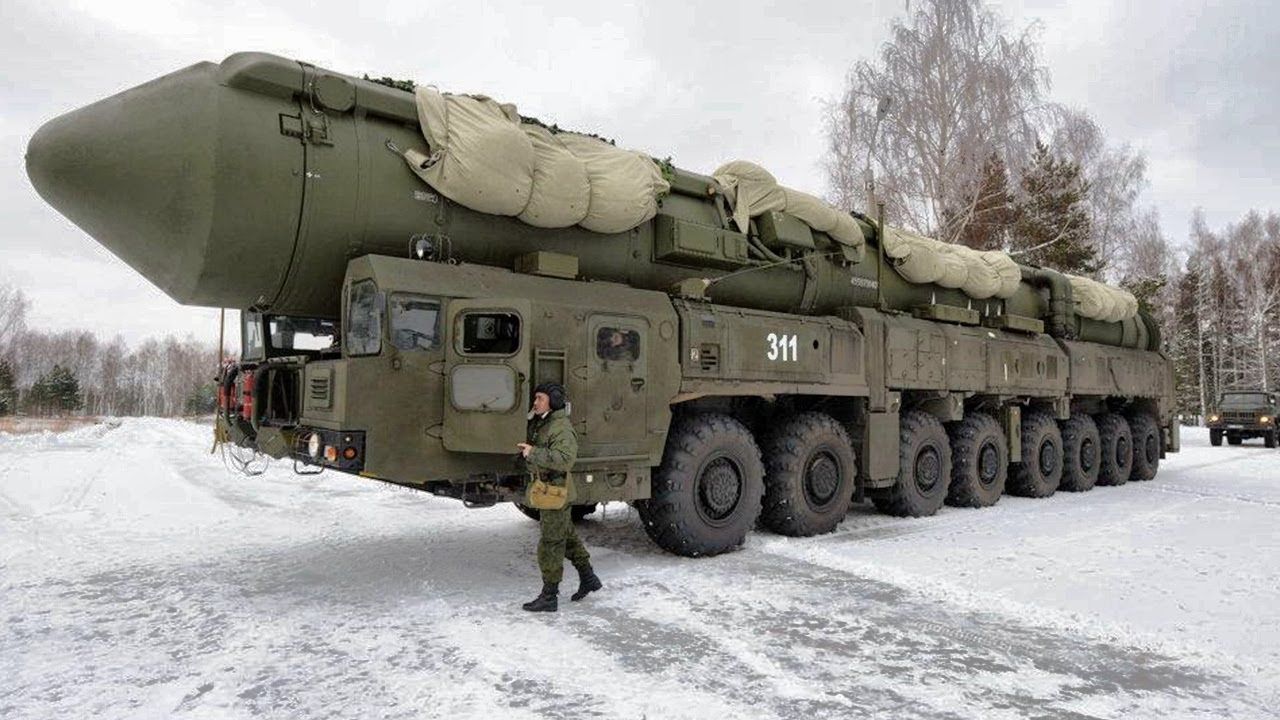Yevgeny Prigozhin and his controversial Wagner Private Military Company (PMC) diverted a contingent east in the direction of a fortified Russian army base that holds miniaturized “nuclear charges” that could be carried in backpacks, according to head of Ukrainian intelligence Kyrylo Budanov.
While they split when Wagner forces drove north toward Moscow on June 24, they eventually could not lay their hands on the devices since they could not access the doors behind which the ordnance was stored.
Budanov asserted in an interview with Reuters that they were heading there because “It significantly raises the stakes” if one is “prepared to fight to the last man.” The Soviet Union-era facility has been identified as Voronezh-45.
Prigozhin finally called off his insurrection after intervention from Belarusian President Alexander Lukashenko, whose office announced that the group would be moved to his country and a large piece of land will be allotted to them as a base.
Under President Vladimir Putin, the Russian government eventually withdrew the criminal case it had filed against it.
Wagner fighters, however, could not get through the doors of the nuclear storage facility. “The doors of the storage were closed, and they didn’t get into the technical section,” he said.
‘Wagner Hands On Nukes Scared Russia & US Governments’
The report added that both the United States and the Russian government were alarmed by the Wagner forces’ presence at Voronezh-45. This implies that Prigozhin wielded his fighters’ presence at the base as leverage. A truce was then brokered between the Russian government and Prigozhin by Lukashenko.
According to Reuters, Wagner fighters drove toward Voronezh-45 after peeling away from a larger convoy of heavy weaponry advancing along the M4 highway that runs north from Rostov.
According to residents and social media posts, this smaller group headed east and engaged Russian forces in a firefight at the first village it reached. But then it appears to have passed without hindrance for 90 km, including driving unchallenged through the center of a town that houses a military base.

However, how the issue was concluded, Prigozhin’s withdrawal, his statement on his Telegram channel, and subsequent official reactions from Russia did not indicate he held the upper hand. His primary demand of wanting to speak to defense minister Sergei Shoigu and Chief of General Staff General Valery Gerasimov was not met.
Russian Government Is Disarming Wagner
Russia’s Ministry of Defense spokesperson Lieutenant General Igor Konashenkov, also announced that the government is seizing a massive arsenal of Wagner weapons that the group surrendered, including tanks, artillery pieces, mortars, and small arms.
“More than 2,000 pieces, including hundreds of heavy weapons such as T-90, T-80, T-72B3 tanks, Grad and Uragan MLRS, Pantsir anti-aircraft systems, 2S1 Gvozdika self-propelled artillery, 2S3 Acacia 152-mm, 2S5 Hyacinth, 152-mm and 2S4 Tulip 240-mm artillery, howitzers and anti-tank guns, mortar systems, multi-purpose armored tractors, APCs, as well as vehicles and 20,000 small arms,” Konashenkov said, giving a break-up of the weapons. Clips on Twitter from Zvezda, the RuMoD’s news channel, showed Wagner’s massive inventory being carted off by Russian soldiers.
Prigozhin Never Had A Chance
Prigozhin’s immediate climb down from his revolt and seizure of his arms by the Russian government being unopposed is inconsistent with Budanov’s suggestion that the Wagner boss had the upper hand.
Reuters also said it “was not able to determine if Wagner fighters made it to Voronezh-45 independently” and that “Budanov did not provide evidence for his assertion, and he declined to say what discussions, if any, had taken place with the United States and other allies about the incident.” “He also didn’t say why the fighters subsequently withdrew,” the report added.

The report did quote an unnamed Kremlin and Russian-occupied Ukraine official, referring to the Wagner fighters’ presence at Voronezh-45 as an “area of special interest.” The official added that this “caused concern” in the Kremlin that “provided the impetus for a hastily negotiated end to the rebellion brokered by Lukashenko.” But the end of the episode with President Vladimir Putin prevailing does not indicate Prigozhin seriously threatened Russia with nuclear weapons.
Thus Budanov’s claim becomes suspect in terms of Prigozhin’s intentions of wielding the nuclear backpacks. Moreover, any non-state actor holding nuclear weapons would have rang alarm bells in the West and NATO, who are known to be sensitive to nuclear proliferation given their hawkish policies on even states like Iran and North Korea.
Besides holding official press conferences announcing the information and expressing concern, the Department of Defense and White House would have exchanged calls with their counterparts in the RuMoD and Kremlin.
Kremlin And US Scientists Doubt Claim
The Reuters report added that the US officials “expressed doubts about this account.” White House National Security Council spokesman Adam Hodge told the news service, “We are not able to corroborate this report. We had no indication at any point that nuclear weapons or materials were at risk.”
However, Vladimir Putin’s press secretary Dmitry Peskov denied that Wagner reached the storage facility and implied Budanov was making a false claim. “The Kremlin does not have such information. It looks like another stuffing,” he told TASS.
Matt Korda, a Senior Research Associate and Project Manager for the Nuclear Information Project at the Federation of American Scientists, said it would be “virtually impossible for a non-state actor” to breach Russian nuclear security. It’s unlikely Wagner soldiers knew how to detonate a bomb.
“If you had a malicious actor who was able to get their hands on a nuclear weapon, they would find the weapons stored in a state of incomplete assembly,” he said. “They would need to be completed by installing specialized equipment and then unlocking permissive action links. And to do that, they would need the cooperation of someone from the 12th Directorate.” The office is responsible for protecting Russia’s nuclear arsenal.
Voronezh-45 & Russia’s Tactical Nuclear Weapons
Voronezh-45 is operated and guarded by military Unit 14254, part of the defense ministry’s 12th Main Directorate responsible for protecting Russia’s nuclear weapons. Tactical Nuclear Weapons (TNW) are used for specific tactical gains on the battlefield, not for destroying big cities. Russia holds a massive numerical superiority over the US in nuclear weapons and is believed to hold 2,000 TNWs.
Many of Russia’s delivery systems are dual-use, meaning they can be used to carry nuclear and conventional warheads. This makes it more difficult to spot preparations for a nuclear strike as they are already deployed in Belarus and the Russian Baltic enclave of Kaliningrad.
Following the collapse of the Soviet Union in 1991, Russia had around 22,000 TNWs, while the United States had about 11,500. Most of these weapons have been dismantled or are awaiting dismantling.
- The author can be reached at satamp@gmail.com
- Follow EurAsian Times on Google News




